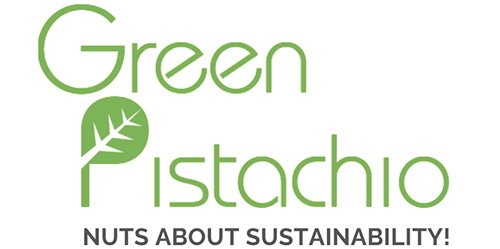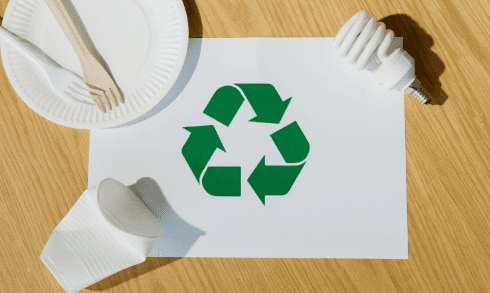The Rise Of Eco-Friendly Fabrics: How To Find The Best Ones
I, Lady Whistledown take my quill to parchment to impart my musings on the resplendent revolution of eco-friendly fabrics, guiding the discerning gentle people towards a wardrobe befitting both their impeccable taste and their noble regard for Mother Earth.
Dearest Gentle Readers of Esteemed Taste and Environmental Conscience,
As I traversed the corridors of time, a journey most peculiar and enlightening, I was greeted by a future replete with marvels and machinations that would leave even the most stalwart of Regency society agog. Amidst the cacophony of progress and innovation, I found myself enveloped in a tapestry of textiles, the likes of which our forebears could scarcely imagine. Yet, with a heart both elated and heavy, I beheld a world awash with the excesses of the fashion industry.
The garments of yesteryear, once cherished and worn until they were no more than threads, have given way to a relentless cycle of consumption and discardment. Mountains of waste cast a shadow over the land, as the once-proud creations of seamstresses and tailors are forsaken in the pursuit of the ephemeral ‘new’ and ‘fast’. The rivers, those veins of our Earth, run thick with the dyes and chemicals of the apparel industry, a testament to man’s folly and disregard for nature’s delicate balance. And oh! The plastics, a material so pervasive that it has infiltrated every corner of our globe, even finding its insidious way into the very fabrics that grace our skin.
Imagine, dear gentle readers, a world where our garments do more than merely adorn us, where each stitch and seam is a testament to our commitment to Mother Earth. As we navigate the salons and soirées of modern society, let us drape ourselves in the splendour of eco-friendly fabrics, the latest craze amongst the ton’s environmentally conscious elite.
It is in this era, where the whispers of the wind speak of change and the rustling leaves call for action, that eco-friendly fabrics emerge as beacons of hope. These sustainable wonders, crafted with care and consideration for our precious environment, stand as a testament to the ingenuity and resolve of humankind. They offer us a chance to mend the errors of our ways, to dress in finery that does not borrow from the future but enriches it.

A Green Thread in the Tapestry of Fashion
What, pray tell, makes a fabric eco-friendly? It is not simply a matter of being agreeable to the touch or pleasing to the eye. Nay, it is a fabric’s lineage and legacy—its birth from sustainable sources, its gentle caress upon the environment, and its gracious return to the earth whence it came—that bestows upon it the title of ‘eco-friendly’.
The Fabrics of Tomorrow, Today
1. Organic Cotton: The Gentle Embrace Imagine, if you will, a field untouched by the harsh concoctions of man, where cotton blooms as pure as Elizabeth Bennet’s wit. This is organic cotton, a fabric soft enough to tempt even Mr. Darcy. Yet, for all its comfort, it thirsts for water like a traveller in the Sahara. Its pedigree, however, is unimpeachable, often boasting the GOTS seal of approval.
2. Bamboo: The Versatile Virtuoso Bamboo, that swift-growing reed, is transformed into a fabric as soft as a lover’s whisper and as kind to the earth as Elinor Dashwood was to her sister. It is a paragon of sustainability, though one must be wary, for not all bamboo is created equal. Some processes, akin to Mr. Hyde’s concoctions, mar its purity.
3. Hemp: The Stalwart Steward Hemp, a fabric of ancient renown, has returned to us, as robust as Hemingway’s prose. It requires little and gives much, strengthening the soil with each crop. Its initial coarseness may deter the faint of heart, but like a Dickensian hero, it proves its worth over time.
4. Recycled Fabrics: The Phoenix’s Plumage From the ashes of waste, recycled fabrics rise, as if plucked from the pages of a Woolf narrative. Recycled polyester, spun from the detritus of our own excess, reduces waste and conserves energy. Yet, beware the siren’s song of microplastics, which may yet lurk within, and end up in our food, Goodness gracious!
5. Linen: The Aristocrat of Aesthetics Linen, the progeny of the noble flax plant, is as biodegradable as it is elegant, demanding little from the earth. It wrinkles as easily as Mr. Collins’ pride but is as breathable as the open moors of Wuthering Heights.
6. Tencel (Lyocell): The Conscientious Countess Born from the pulp of sustainably sourced trees, Tencel is as smooth as a sonnet and as strong as an oak. Its price may raise eyebrows at Pemberley, but its closed-loop production is a waltz of environmental responsibility.

The Conundrum of Choice
When selecting the perfect eco-friendly fabric, one must consider personal comfort, the rigours of care, and the impact upon our fair planet. Seek out those fabrics in establishments of good repute, and demand certifications as proof of their noble origins. Inquire with the tenacity of a Brontë heroine to ensure you are not led astray.
When embarking upon the quest for eco-friendly fabrics, one must navigate the market with the discernment of a seasoned connoisseur. To aid in this noble pursuit, I present to you a collection of certifications, each a seal of environmental and ethical assurance, to seek out whilst selecting your sustainable attire:
1. Global Organic Textile Standard (GOTS): The epitome of virtue for organic textiles, this comprehensive standard ensures the organic status of textiles from the harvesting of the raw materials through environmentally and socially responsible manufacturing, all the way to labelling. Look for the GOTS certification to ensure that your fabric is truly organic and produced in a manner that respects both the environment and the workers.
2. OEKO-TEX Standard 100: A testament to safety, this certification guarantees that the certified textile has been tested for harmful substances. It is a beacon of trust for those who wish to clothe themselves in materials free from substances that could harm one’s health or the environment.
3. bluesign®: A herald of sustainable manufacturing, the bluesign® system unites the entire textile supply chain to reduce its impact on both people and the environment. This certification ensures that each stage of production is clean and safe, and that the final product meets the most stringent of safety standards.
4. Fair Trade: As much as a fabric’s environmental pedigree matters, so too does the well-being of those who craft it. The Fair Trade certification signifies that the farmers and workers involved in the production of the fabric have been justly compensated and work under fair, safe, and dignified conditions.
5. Cradle to Cradle Certified™: This certification assesses the safety, circularity, and responsibility of materials and products across five categories of sustainability performance. Seek out this certification for assurance that a product has been designed with consideration for its life cycle, including its potential for reuse, recycling, or composting.
6. Forest Stewardship Council (FSC): For fabrics such as Tencel and other wood-based fibers, the FSC certification is a green beacon, ensuring that the wood pulp used to create the fabric comes from responsibly managed forests that provide environmental, social, and economic benefits.
7. Better Cotton Initiative (BCI): The BCI aims to transform cotton production worldwide by developing Better Cotton as a sustainable mainstream commodity. When you spot the BCI logo, you can be confident that the cotton used in your fabric has been grown with a reduced environmental footprint and improved livelihoods for farmers.
In your pursuit of eco-friendly fabrics, arm yourself with the knowledge of these certifications. They serve as your compass in the vast wilderness of textiles, guiding you to choices that align with the highest standards of environmental stewardship and social responsibility. With these emblems of sustainability in hand, you may weave a wardrobe that is as commendable in ethics as it is exquisite in elegance.
A Farewell Stitch
Let us recapitulate, dear readers, the virtues of these eco-friendly champions. From the soft embrace of organic cotton to the regal poise of linen, each has a role in our sartorial future. I entreat you to don these fabrics with pride and share your tales of eco-conscious elegance.
As I pen this missive, I implore you, dear readers, to choose wisely the fabrics that adorn your person. Let us embrace the elegance of sustainability and weave a new narrative for sustainable fashion—one that honors the Earth, sustains its bounty, and ensures that future generations may waltz at the balls and promenade in the parks without the spectre of environmental ruin looming over them. With this, I urge you to unfurl the banners of eco-consciousness and let them billow in the winds of change. Your choices, both grand and minute, weave the fabric of tomorrow.
And so, I bid you adieu with a flourish of my quill, and a call to action: Share your favoured eco-friendly fabrics and brands in the comments below, that we may all partake in the splendour of sustainability.
Yours in environmental solidarity,
Lady Whistledown







2 Comments
Newsletter December 2024 - Green Pistachio
1 year ago[…] it’s championing the advantages of local sourcing for community and planet or discovering the magic of eco-friendly fabrics like Tencel and linen, we’re committed to sharing stories that inspire conscious […]
A Fascinating Fashion Face-Off: Tempting Trends vs. Savvy Sustainability - Green Pistachio
11 months ago[…] it, “The most sustainable thing you can do is to make something that lasts.” And we agree 100%. The rise of Eco-friendly fabrics has made it possible for environmentalists to look fabulous without the eco-guilt. For those just […]